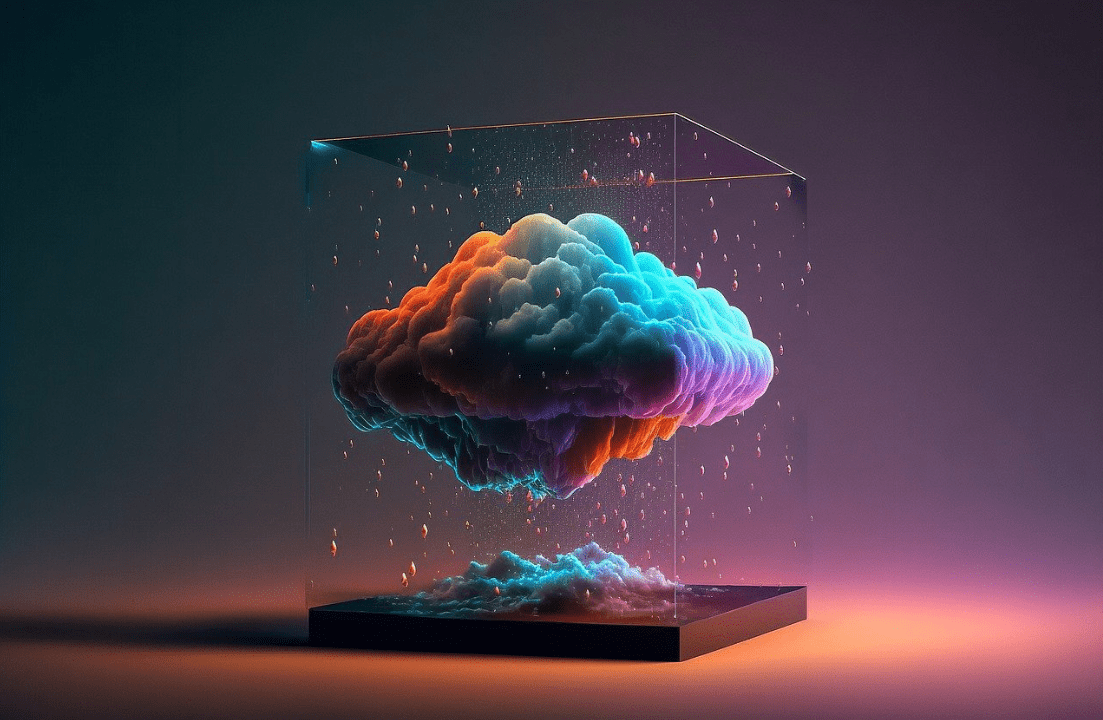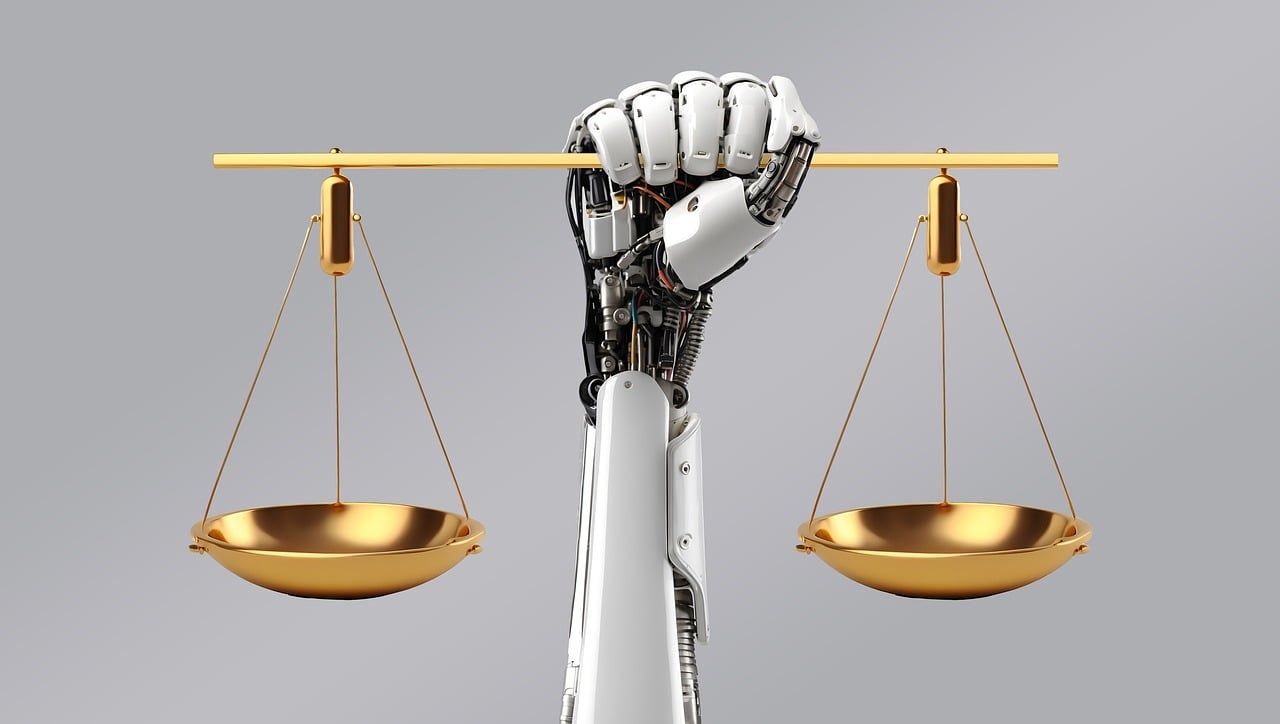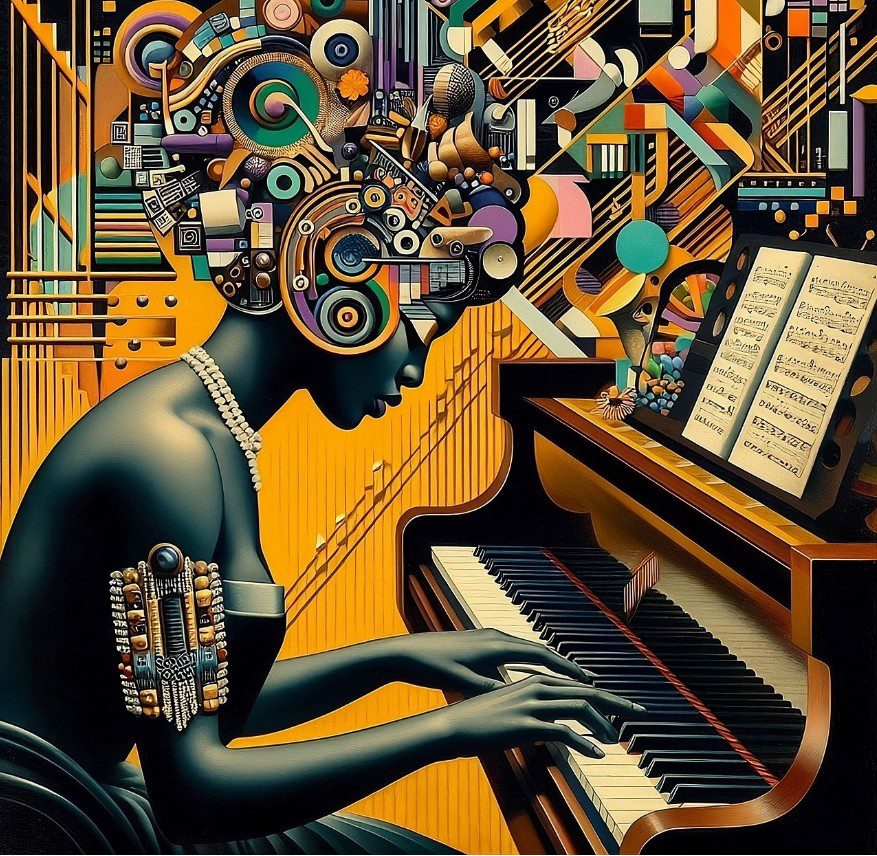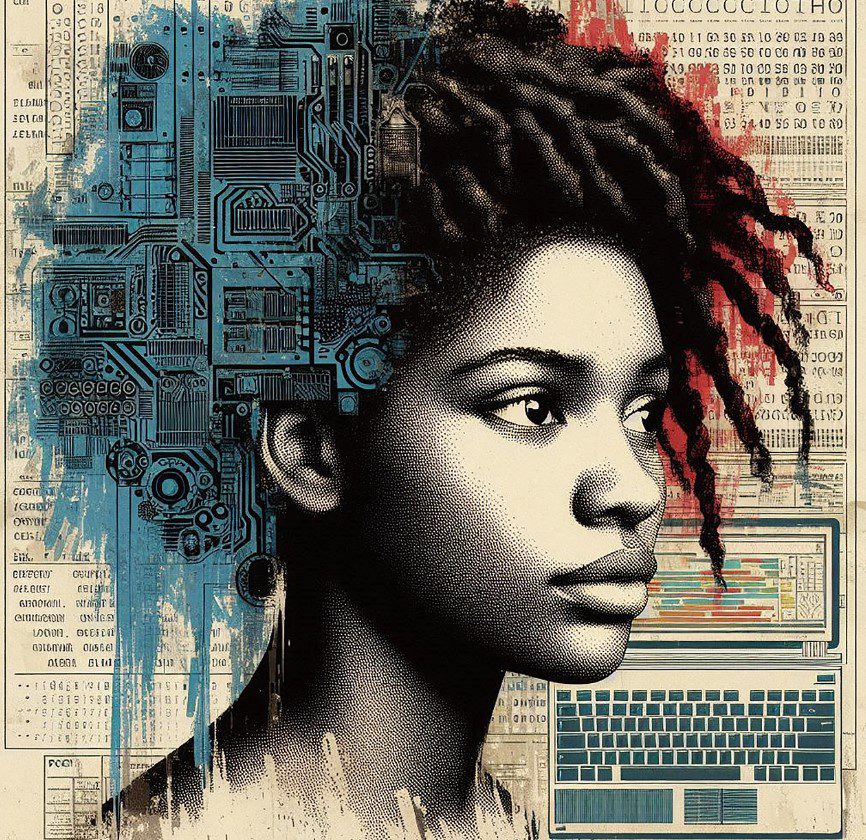The world of art is on the brink of a revolution, and the driving force behind it is artificial intelligence. AI is no longer just a concept from science fiction; it is rapidly transforming the world of art and blurring the lines between human and machine in fascinating, and thought-provoking ways.
This isn’t just about robots holding paintbrushes or computers churning out images. AI is fundamentally reshaping the creative process, pushing the boundaries of what’s possible in art, music, literature, and design. It enables artists to experiment with new styles, explore complex patterns, and create works at a scale and speed unimaginable before.
AI augments human creativity in several ways:
- Pushing Boundaries: AI can go deep into uncharted territory, producing art that transcends human limitations. Algorithms can analyze vast datasets of artistic styles, and generate entirely new forms of expression that challenge our perception of art itself.
- Automated Assistant: AI can handle the mundane. Repetitive tasks like image manipulation or background generation become a breeze. This allows artists to focus on the big picture – the emotional core and message they want to convey.
- Creative Collaboration: AI is a tireless artistic partner. AI can churn out endless variations on themes, and generate unexpected color palettes. It can even compose music that complements a developing piece. This frees artists to explore new avenues and refine their vision.
Art and GANs

At the forefront of this revolution are generative adversarial networks (GANs). This is a type of AI algorithm that can generate new images by learning from a dataset of existing ones.
This technology allows artists to produce entirely novel works that blend styles and elements in unprecedented ways.
For example, AI can create a painting that combines the surrealism of Salvador Dalí with the realism of a photograph. This can result in a unique and captivating piece of art.
Another significant advancement is style transfer, where AI applies the style of one image to another. Imagine transforming a simple photograph into an image that resembles a Van Gogh painting, with the swirling, emotive brushstrokes characteristic of the Dutch master.
This technology empowers artists to experiment with different styles and techniques, pushing the boundaries of their creative expression.

In the world of music, AI composers are making waves. Tools like OpenAI’s MuseNet and Google’s Magenta can compose original scores in a variety of styles, from classical symphonies to contemporary pop songs. These AI systems analyze vast amounts of musical data to generate compositions that are both innovative and deeply rooted in musical tradition.
Question is, Can AI Enhance Human Creativity?
AI powered tools can suggest color palettes, generate patterns, or even complete parts of an artwork. This gives time to human artists to focus on the aspects of creation they find most fulfilling.
These collaborative tools streamline the creative process and open new avenues for artistic exploration.
Here’s how:
- Inspiration and Exploration: AI can analyze vast amounts of data, generating unexpected ideas and connections that might spark a new creative direction for an artist, writer, or musician. AI-created color combinations can spark inspiration for a painter, while AI-prompted story fragments can help a writer overcome creative block.
- Efficiency and Refinement: AI can handle repetitive tasks, freeing up human creators to focus on what they do best – bringing their unique vision to life. This could involve AI taking care of image manipulation, background generation in music, or even basic code structure for interactive art installations.
- Breaking Boundaries: AI can push the creative envelope by generating art forms that are beyond human capabilities. Imagine AI creating music that blends genres in entirely new ways or generating visual art that defies traditional styles. This can inspire and challenge human artists to explore new creative territories.
All in all, AI enables artworks that respond to viewers’ actions, creating a dynamic and immersive experience.
For instance, an installation might change colors or shapes based on audience movement, making each interaction with the artwork unique.
However, it’s important to remember that AI is a tool, not a replacement for human creativity. The artist’s role will remain crucial in shaping the final product, injecting their unique perspective and emotional depth.
How Best Can We Preserve Art with AI?

AI offers a treasure trove of possibilities for art preservation. This technology empowers us to preserve and ensure the appreciation of masterpieces for generations to come.
Here are ways it can be a game-changer:
- Digital Guardians: AI can be used for high-fidelity digitization of artworks, capturing intricate details and vibrant colors. These digital copies create a permanent record, ensuring the artwork’s essence is preserved even if the original deteriorates.
- Damage Detectives: AI can analyze digital scans of art to identify early signs of damage or wear. This allows for timely intervention by conservators, preventing further deterioration. Imagine AI spotting subtle cracks in a painting or identifying minor fading in a tapestry – all before it becomes a major restoration project.
- Virtual Restorers: AI can be trained to analyze vast datasets of restored artworks. This allows for the creation of virtual restorations, providing a glimpse into the artwork’s original state without physically altering the original piece. This is particularly valuable for fragile or culturally significant works.
- Art Detectives: AI can be used to identify forgeries or replicas. By analyzing stylistic elements and comparing them to known works by the artist, AI can assist in authentication, protecting the integrity of artistic legacies.
- Predictive Preservation: AI can analyze environmental data and predict how an artwork might deteriorate over time. This allows for the creation of customized preservation plans, ensuring the artwork remains in optimal condition for future generations.
It is however important to remember that AI is a tool, and its effectiveness depends on the quality of training data and the expertise of human conservators. Working together, AI and human specialists can ensure that our artistic heritage is preserved for generations to come.
Ethical and Philosophical Considerations

This artistic evolution comes with its share of questions. What does it mean to be a creative in a world where machines can mimic human expression? Does AI-generated art hold the same value as a painstakingly crafted masterpiece? Others believe that AI’s ability to generate novel and surprising works indicates a form of creativity that is distinct from, yet complementary to, human creativity.
These are valid concerns. AI isn’t a replacement for human creativity; instead, it serves as an extension of it. The artist’s vision, their unique perspective and emotional fingerprint, remains paramount. AI simply provides the tools to bring that vision to life in ever-more stunning ways.
Another pressing issues is authorship. Who owns the rights to an artwork created by AI? Is it the artist who designed the algorithm, the AI itself, or the organization that owns the AI? These questions challenge traditional notions of authorship and copyright in art.
For example, prominent artists like Refik Anadol and Mario Klingemann are at the forefront of the AI art movement, using AI as a central part of their creative process. Global exhibitions in galleries and museums showcase their works, demonstrating the profound impact of AI on contemporary art.
In 2018, Christie’s auction house sold an AI-generated artwork for $432,500, signaling a growing market for AI art. This landmark event underscores the increasing recognition and value of AI-generated art in the art world.
The Future?

The future of AI in art is brimming with possibilities. As AI technology advances, we can expect even more sophisticated tools and techniques. These advancements will continue to challenge and expand our understanding of what art can be, pushing the boundaries of creativity and innovation.
Imagine interactive installations that respond to viewers’ emotions, or AI-generated music that evolves with each listen. The possibilities are endless, and the journey promises to be as captivating as the art itself.
As AI continues to develop, one thing is certain: the lines between technology and creativity will continue to blur. This collision of technology and creativity will undoubtedly redefine art, prompting us to re-evaluate what it means to create and be touched by something truly beautiful.





Leave a Reply